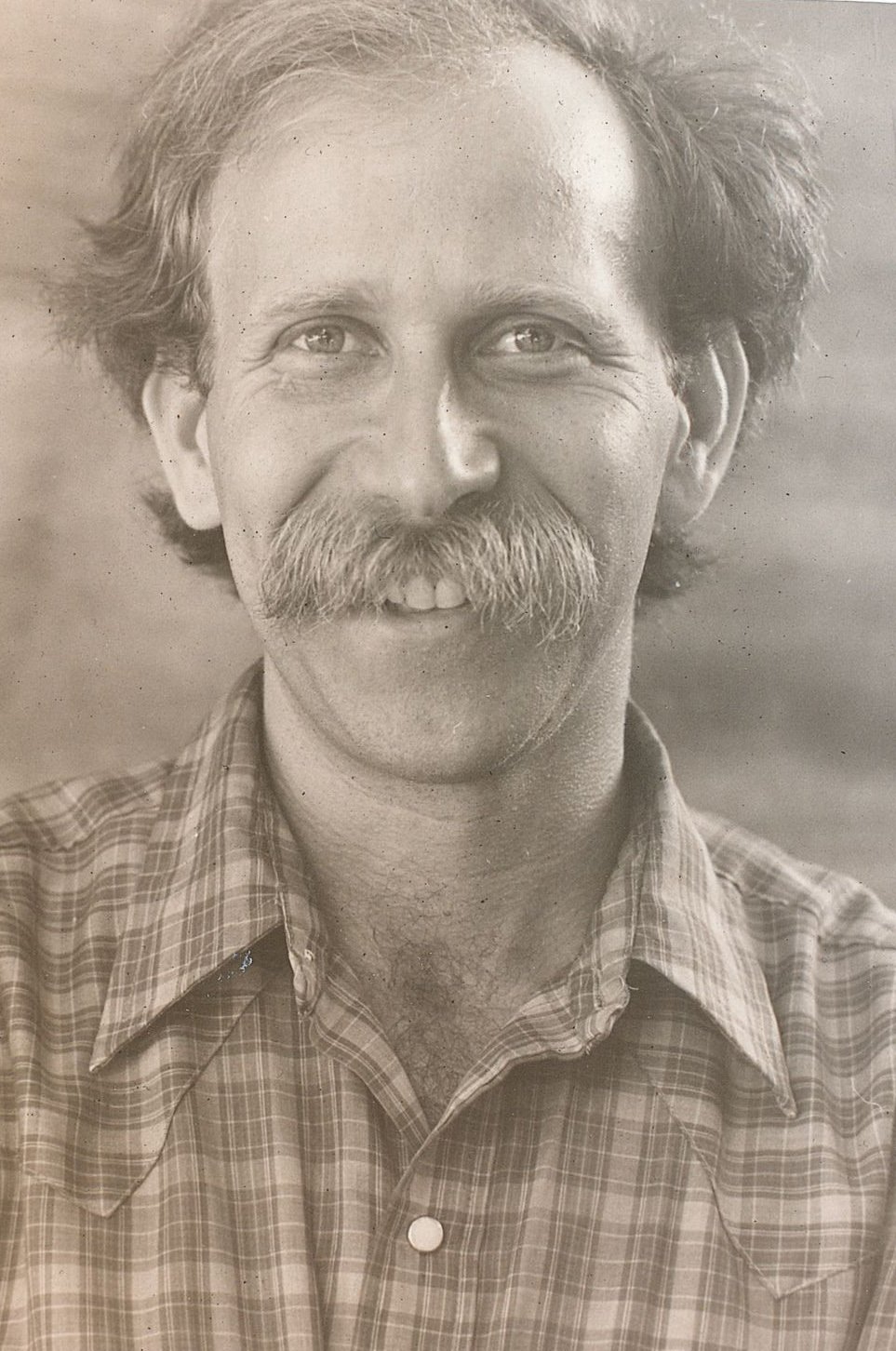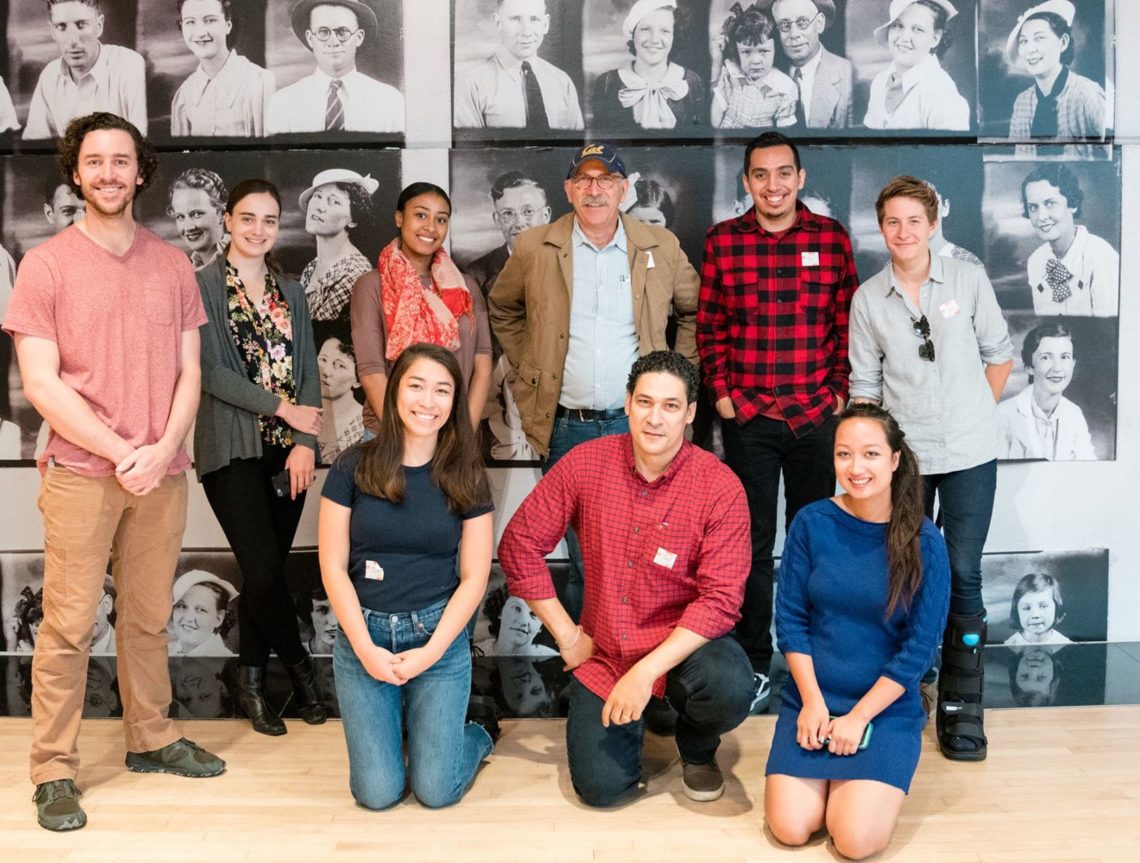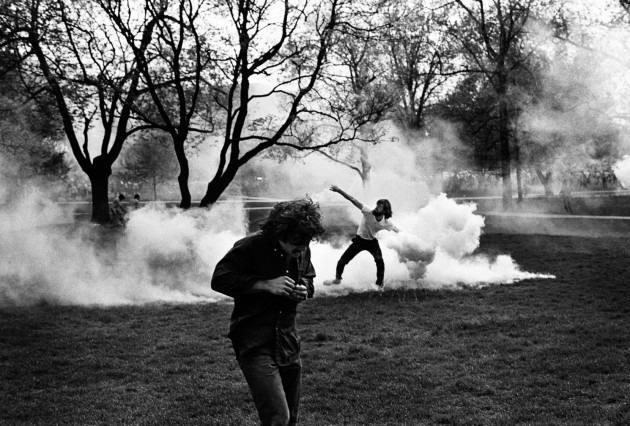The Board of Trustees of the John Simon Guggenheim Memorial Foundation has announced the 2021 Guggenheim Fellowship recipients. Among them is Reva and David Logan Professor of Photojournalism Ken Light, one of the 184 artists, writers, scholars, and scientists chosen through a rigorous peer-review process from almost 3,000 applicants.
A beloved teacher, colleague and mentor to innumerable alumni, Ken has taught at the School since 1983 and has worked as a freelance documentary photographer for forty-years, dedicating his career to documenting social issues facing America.

Ken Light (and his mustache) in the early days at UC Berkeley.
Ken’s photojournalism project will document the aftermath of the 2020 presidential election and focus on the swing states of Wisconsin, Michigan, Pennsylvania, Indiana and Ohio.
The announcement follows a deal for his new book “Course of the Empire” with Steidl, one of the most prestigious fine art book publishing houses in the world.
Ken’s work has been published in nine books, in magazines, numerous anthologies and in a variety of media, from digital to motion pictures. He has exhibited internationally in over 200 one-person and group shows and his work is part of numerous collections including the San Francisco MOMA, the Houston Museum of Fine Arts, the International Center of Photography and the American Museum of Art at the Smithsonian, Library of Congress and many others.
“Ken represents what we all aspire to as journalism professors–not only to be passionate teachers but to continue to do transformative work that is relevant and resonant with the most pressing issues of our time,” said Geeta Anand, dean of Berkeley Journalism. “I couldn’t be more excited that Ken’s work has been honored with a Guggenheim Fellowship. It’s a huge honor and a much deserved one.”

Ken Light and his class at the Walker Evans show at the SF MOMA in 2017. Photo: Bradley Machado
We (email) interviewed Ken about the news:
What incredible news to receive after a year of living through a pandemic, learning to teach remotely and finishing a book concurrently. How did it feel to get the news?
I was elated, tearful and incredibly honored to get a Guggenheim and recognition of my life in photography. It also allows me to begin a new project without having to look back.
You’ve taught at the School since 1983 and been a mentor to hundreds of students, many you stay in touch with. What has this meant to you over the years?
I have loved teaching as well as learning from my students, sometimes as much as they learn from me. To see them succeed and become the voices and witness of our times is thrilling. To know that the gauntlet of reporting and storytelling is in good hands is so important and comforting.
Let’s talk about your dedication to covering social justice issues in the U.S, from death row to immigration and those immigrating; abject poverty, to working conditions for coal miners and sex workers to cafeteria workers, and a myriad of protests against injustice from anti-war protests to the women’s marches. Where does this stem from?
I believe it comes from my youth when I witnessed how so many people were not living the so-called American dream. How my grandparents born from the immigrant experience worked to make a better life for us. I have always felt that we must look inside our own country before we look and criticize other countries. The communities I have photographed are the mighty hands that have labored and built America and need to be seen. Their stories are the cornerstone of our country and too often they are left out of the American tale.
While you were studying at Ohio University in 1970, you hitchhiked to Ohio State to photograph demonstrations against the US invasion of Cambodia where you would capture some of your most powerful early images. Remarkably you were still a teenager at the time…
Yes, I was 19 years old and the photos that I made in 1970— days before four students were killed at Kent State University— were published all over the world. That voice of witnessing one’s world in turmoil made me realize that photography could be powerful and that journalism could have an incredible power and presence. This became my path.

Cambodia invasion riot, Columbus, Ohio 1970. Photo: Ken Light
You’ve photographed the Black American experience for decades and documented important social movements that confronted white supremacy in this country. What’s different after George Floyd, that horrific video and what does it say about the importance of moving and still pictures?
When I photographed in rural Mississippi for my book Delta Time, the Black community was open and supportive of an outsider telling their story. The oppression I witnessed is so often unseen, physcological: a glance, a word, a gesture. To now witness the truth of this oppression that these communities have lived with recorded and shown to those who disbelieved and ignored it is incredibly important. When you look into a photo or the horrific video of George Floyd’s murder you realize that images have incredible power to be a truthteller to those who are unwilling to see the experiences of people of color.
You’ve been arrested a few times while out shooting and might be the only professor at the School with an FBI file…
Yes, it’s all true…just a day in the life of a journalist photographer telling the stories that have been ignored for too long and telling truth to power can get you in trouble in this country!
By Marlena Telvick
